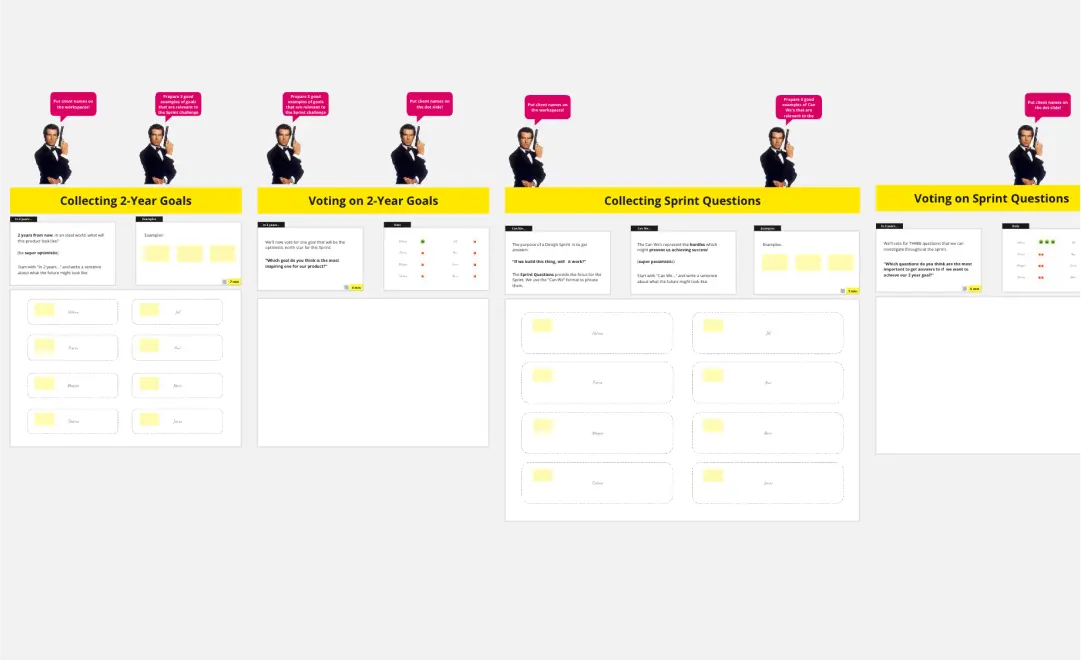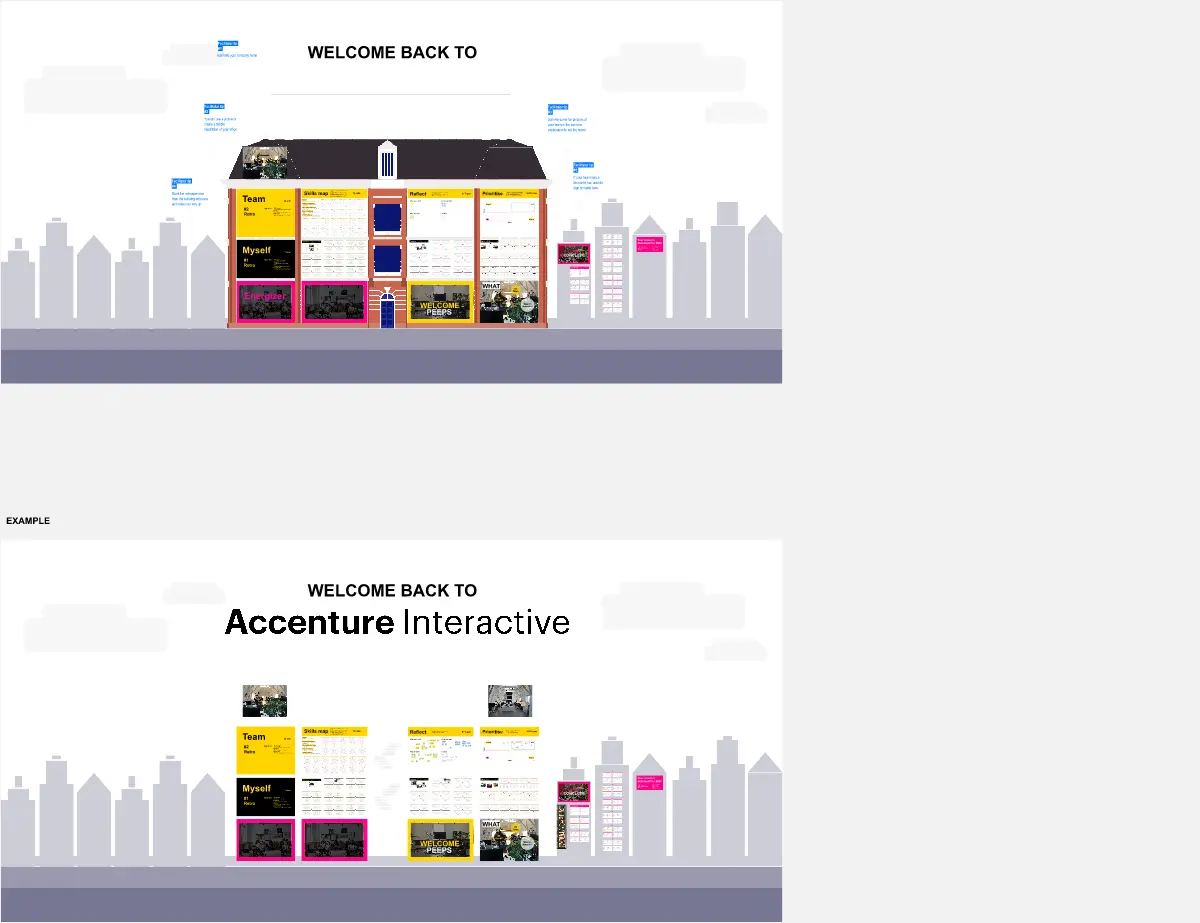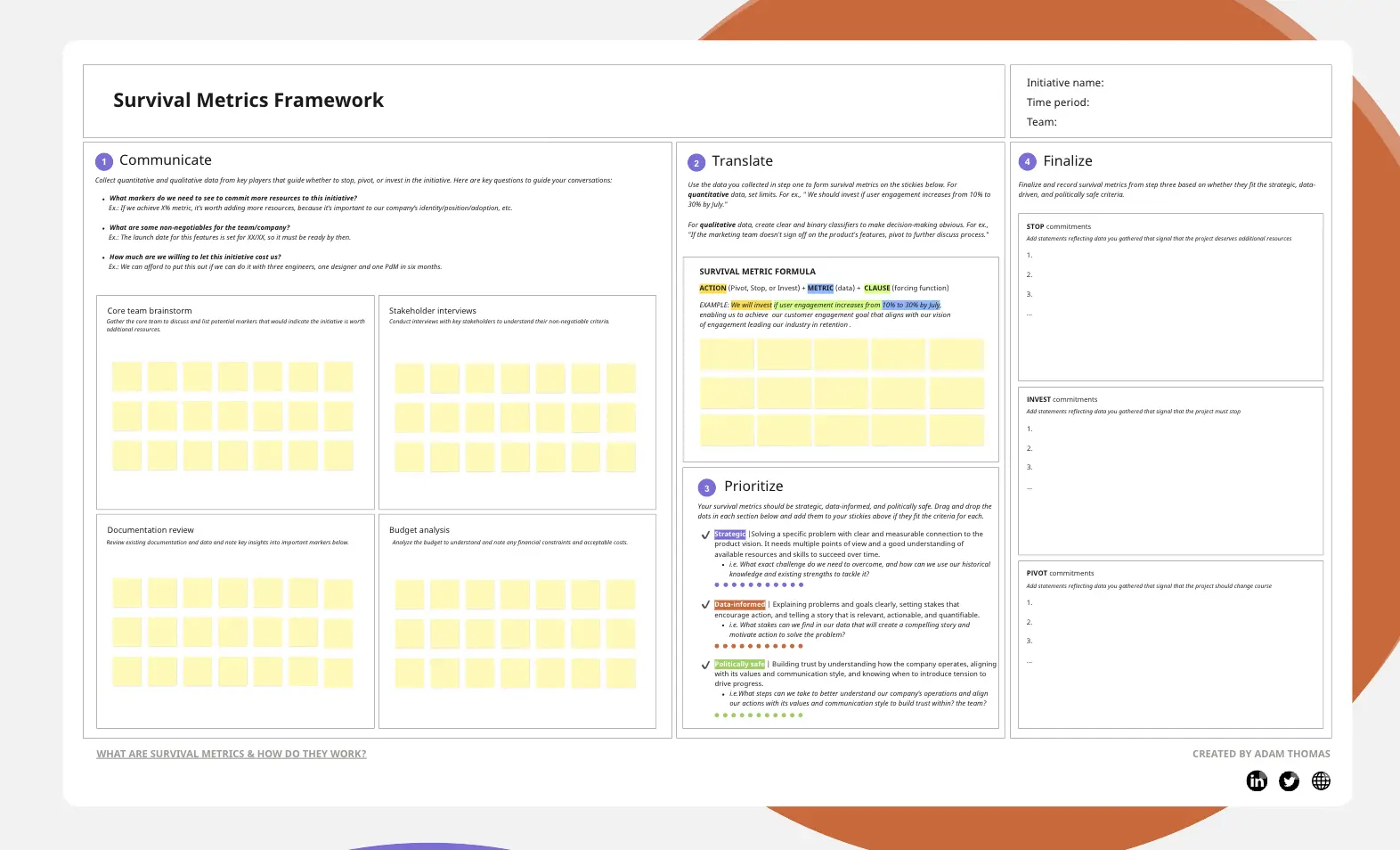In the fast-paced world of product and project management, effective meetings are crucial for success. This Meeting Planner Template is designed to help you set up impactful meetings, whether it's a single session or a recurring cadence. This template integrates best practices from good meeting processes, workshop facilitation, and experience design. It can be used individually or collaboratively. Below, you'll find a step-by-step guide on using this meeting planner template to ensure your meetings are productive and goal-oriented.
Total time: 20-30 minutes.
How to use the Meeting Planner Template
Follow the steps below to get the most out of the meeting planner framework in Miro.
1. Set meeting goals and non-goals
Goals: Clearly define what you aim to achieve in the meeting. This could range from strategic planning to customer satisfaction reviews. Use Bloom’s Taxonomy framework to organize your goals against the types of thought practices you’ll need to engage in. If there are no items in the top levels of the taxonomy (create, evaluate, analyze), consider resolving the issue async instead of meeting.
Non-Goals: Identify objectives that should be intentionally avoided, even if they may seem attractive in the short term. Non-goals help you avoid areas that could hinder overall progress towards the desired outcome of your meeting.
2. Generate a list of inputs
Determine any information required before the meeting. This could be documents that need to be distributed or topics that participants should consider beforehand.
3. Set the meeting format and attendees
Choose a meeting format that best suits your objectives. Some types of meeting formats include:
Lean Coffee: Agenda-less meeting where participants bring topics, vote, and discuss by priority.
Dory: Crowd-sourced Q&A format with voting.
Agenda Collection & Review: Collect agenda items from participants before the meeting, review, and prioritize.
Fishbowl Discussion: Small group discussion in an inner circle while others observe.
World Café: Small group discussions at different tables, with periodic movement to new tables.
Open Space Technology: Participants create and manage their own agenda around a central theme.
Silent reading and discussion: Start by reading a document, and then, after everyone has read and commented, have a facilitated discussion.
Then, list the participants and their roles. Ensure that only necessary individuals attend to keep the meeting focused and efficient. If there are people with similar roles, consider their contributions—do you need all of them? If anyone doesn’t need to contribute to the meeting, consider removing them. You can also create a list of people who should be informed of the meeting's outputs but should not attend.
4. Identify outputs
Determine the meeting's outputs, including action items and next steps. Decide where these outputs will go, and whether they will flow into other meetings or need to be summarized and sent to stakeholders.
5. Review and finalize inputs
Attempt to draw connections using the arrow tool between goals, inputs, output, attendees, and meeting format. Review any concepts that are not connected and remove them, including attendees.
6. Create a meeting agenda
Transcribe all the information into a structured meeting agenda. The agenda should include:
Meeting topic
Goals
Attendees and their contributions
Pre-work
Agenda items
Post-work
Use Miro AI to create a first draft of your meeting agenda. Select the entire framework, click on the AI logo, and use the provided prompt template to generate a comprehensive agenda.
By following these steps, product and project managers can ensure their meetings are well-planned, focused, and productive. The Meeting Planner Template is a valuable tool for achieving meeting success, making it an essential part of your meeting planning toolkit.

Chris Butler
Chaotic Good Product Manager @ GitHub
Chris Butler is a chaotic good product manager, writer, and speaker. He has product leadership and operations experience at Microsoft, Waze, KAYAK, Facebook Reality Labs, Cognizant, and Google. Today he is Staff Product Operations Manager for GitHub's AI and Productivity team.
Categories
Similar templates
AJ&Smart's Remote Design Sprint

AJ&Smart's Remote Design Sprint
Solve big challenges, create new products or improve existing ones with this Design Sprint Template. Build better products with innovative and faster processes.
Survival Metrics Framework
End of the Year Team Retro

End of the Year Team Retro
The End of the Year Team Retro template offers a structured approach for teams to reflect on their achievements and challenges throughout the year. It provides elements for celebrating successes, acknowledging setbacks, and setting goals for the upcoming year. This template enables teams to foster a sense of closure and renewal, promoting a positive outlook and alignment towards common objectives. By facilitating reflection and goal-setting, the End of the Year Team Retro empowers teams to strengthen their cohesion, enhance performance, and approach the new year with enthusiasm and focus effectively.
AJ&Smart's Remote Design Sprint

AJ&Smart's Remote Design Sprint
Solve big challenges, create new products or improve existing ones with this Design Sprint Template. Build better products with innovative and faster processes.
Survival Metrics Framework
End of the Year Team Retro

End of the Year Team Retro
The End of the Year Team Retro template offers a structured approach for teams to reflect on their achievements and challenges throughout the year. It provides elements for celebrating successes, acknowledging setbacks, and setting goals for the upcoming year. This template enables teams to foster a sense of closure and renewal, promoting a positive outlook and alignment towards common objectives. By facilitating reflection and goal-setting, the End of the Year Team Retro empowers teams to strengthen their cohesion, enhance performance, and approach the new year with enthusiasm and focus effectively.
